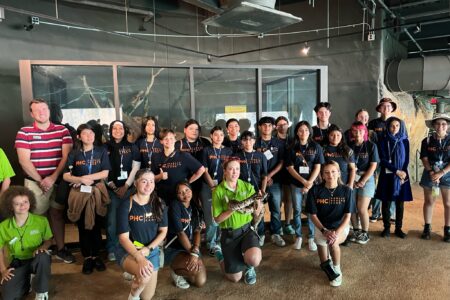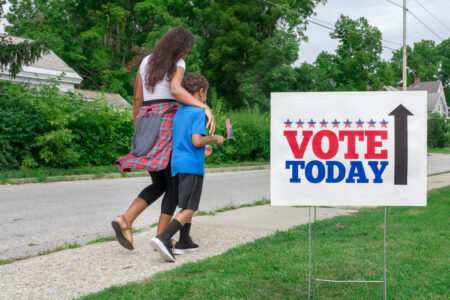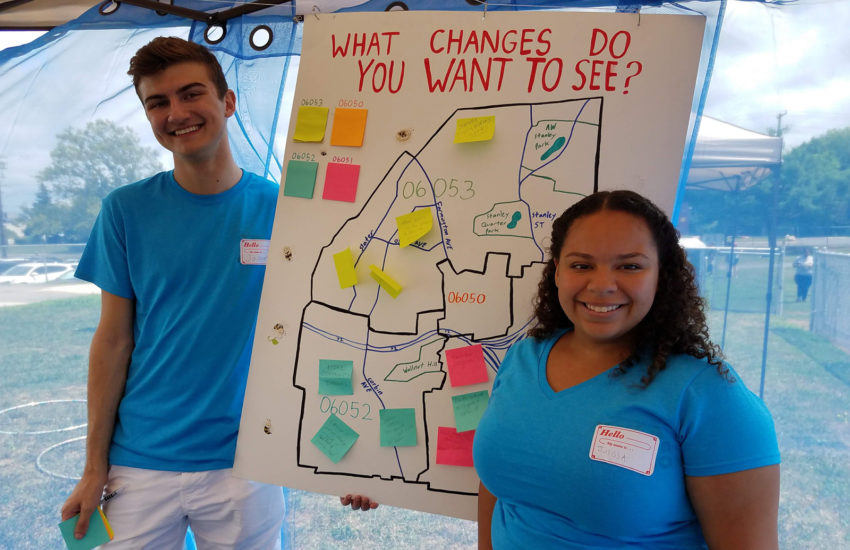
Share On Social!
They say a picture can illustrate what at times words cannot.
That is what drove Jayme Hannay to lead a decade-long project that encouraged teen empowerment, advocacy, and healthy change in New Britain, Connecticut — Photovoice. Hannay and her team teach local teens about photography, but for an ethical cause: Showcase how the local environment contributes to health issues, and spur solutions.
With core support from the Healthy Tomorrows Partnership for Children Program and a research grant from Salud America!, they launched the Healthy Tomorrows for Teens project.
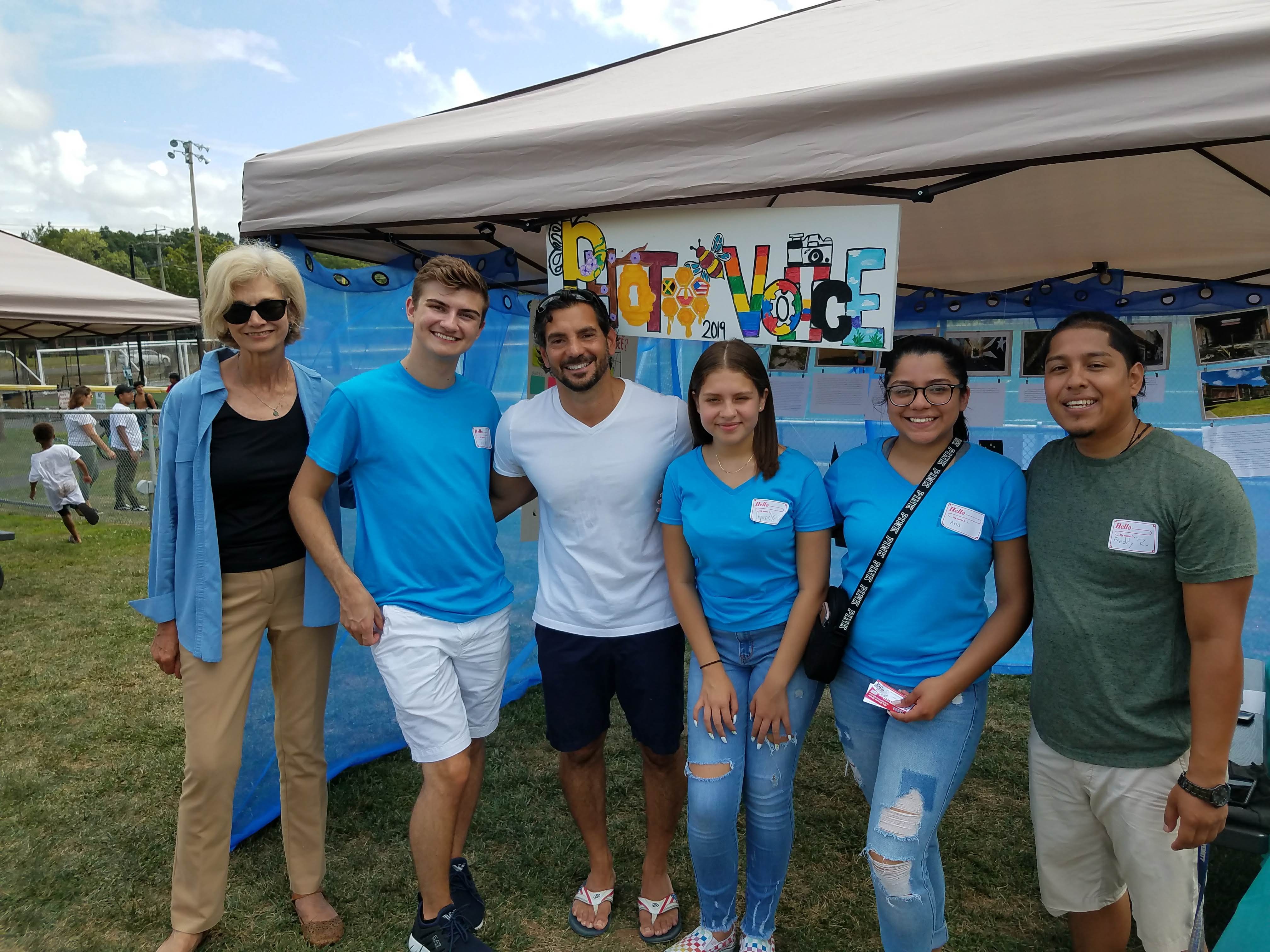
“Photovoice can expedite policy change because it makes community members co-researchers in assessing their environment and allows for rapid translation of their findings into action,” said Hannay, a project consultant and a former Salud America! grantee researcher. “It empowers youth and adults to mobilize around a collective agenda for change, fosters new partnerships, and catalyzes a multi-sectoral response to shared problems.
“A decade later Photovoice workshops continue to be a core strategy for increasing teen-led advocacy for policies and programs that support a healthier environment.”
Humble Beginnings of Teen Empowerment through Photovoice
In 2007, the issue of obesity was rising in New Britain.
The Healthy Tomorrows for Teens initiative began because Hannay saw that problem in her community.
“Adolescent girls in New Britain—especially those living in low-income isolated neighborhoods like the East Side —experience immediate threats to their health that may have lifelong consequences,” she writes in an abstract about the project. “Challenges include obesity, depression, and teen pregnancy (New Britain has the state’s highest rate of repeat teen pregnancy with no local resources to address it). Poverty, unemployment, and low education levels in the neighborhood where these teens live, work, learn, and play compound their problems.”
Moreover, obesity rates were especially high among Latinas at New Britain High School, Latina students were less likely to be physically active than other girls, and over half of Latinas were failing P.E.
Hoping to move the needle, she and Dr. Robert Dudley of Community Health Center, Inc., began something unique — the East Side Community Center: A Hub of Health and Empowerment for Youth and Community.
Hannay and her partners at the YWCA—formerly Young Women’s Christian Association—branch in New Britain, Conn., then started teaching local teens how to capture the ways their surroundings impact their health, as well as the community’s, through the Photovoice program.
Teens took photos of their environment—abandoned parks, excess trash, corner stores with no healthy food.
They shared those photos start a conversation with school leaders and the New Britain YWCA — this led to the group successfully advocating for and the school system implementing an after-school P.E. credit recovery program.
Taking that idea a step further, the group even distributed those photos with local civic and business leaders to advocate for several healthy changes.
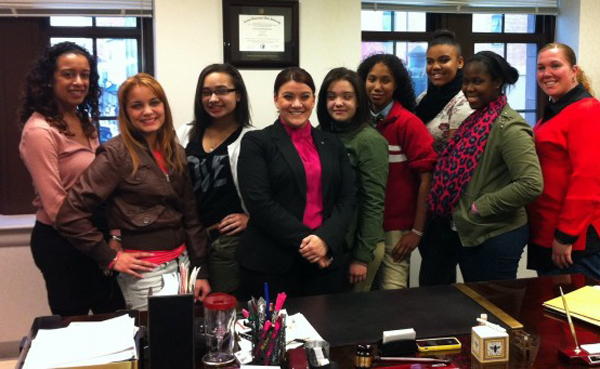
As such, it showed that Photovoice is both a research tool to investigate health problems and an intervention to engage youth and community members in advocating for solutions, Hannay said.
But the project didn’t stop there.
Evolving Beyond Obesity
The Healthy Tomorrows project started moving beyond just obesity.
Over ITS next 12 years, Hannay and the team expanded to address local issues in other areas, such as poverty and education.
Moreover, a 2013 grant supported the establishment of a Teen Center, the YWCA House of Teens.
“[The facility] provided space where teens could access family planning, stress reduction, fitness, and other services, while also making their voices heard through advocacy for policy change,” YWCA website states.
Not only did the center give teens in need a way to illustrate their world and its hardships, but they even went further by teaching these young people how they could change their situation.
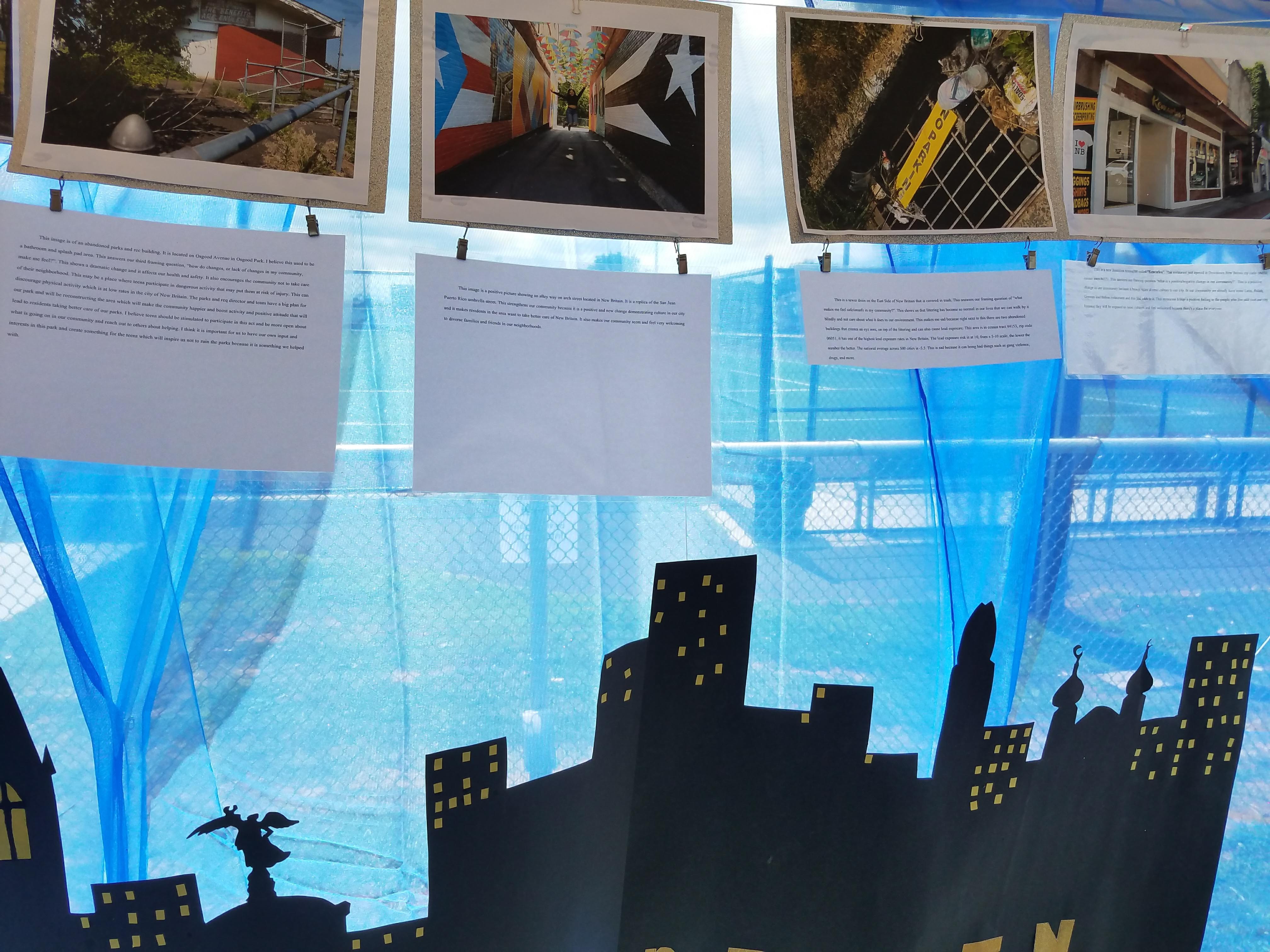
The House of Teens offers “classes in stress management, career and college preparation, and nutrition classes from mentors from the Community Health Center,” according to the YWCA website.
“We’re hoping to look at the needs that community members expressed and establish programming that is tied directly to address each of those needs,” said Valerie Cammarota, project director for Healthy Tomorrows and community wellness Director at YWCA New Britain.
These courses give more than just life assistance, too.
They also provide students an opportunity to earn high school course credits.
“The East Side Community Center is a place our House of Teens participants can call ‘home,’” YWCA website states. “The expansion from one room in the basement of the YWCA to a four-classroom facility, and with partners joining in on the development of the center, proves to the neighborhood that we share a commitment in strengthening community involvement, increasing safety, and empowering residents in the East End.”
Photovoice Helps Teens Tackle New Issues
Photovoice projects have focused on other issues of concern, including access to transportation, violence, bullying and cyberbullying.
Teens displayed their work at the State of Connecticut’s Commission on Human Rights and Opportunities. The presentation highlighted their personal stories at “Kids Speak” at UCONN law school. In 2016, the House of Teens Photovoice program played a key role in earning New Britain the designation as an All-America City by the National Civic League. Photovoice was highlighted as one of three city projects that demonstrate progress in ensuring “all our children are healthy and successful in school and life.”
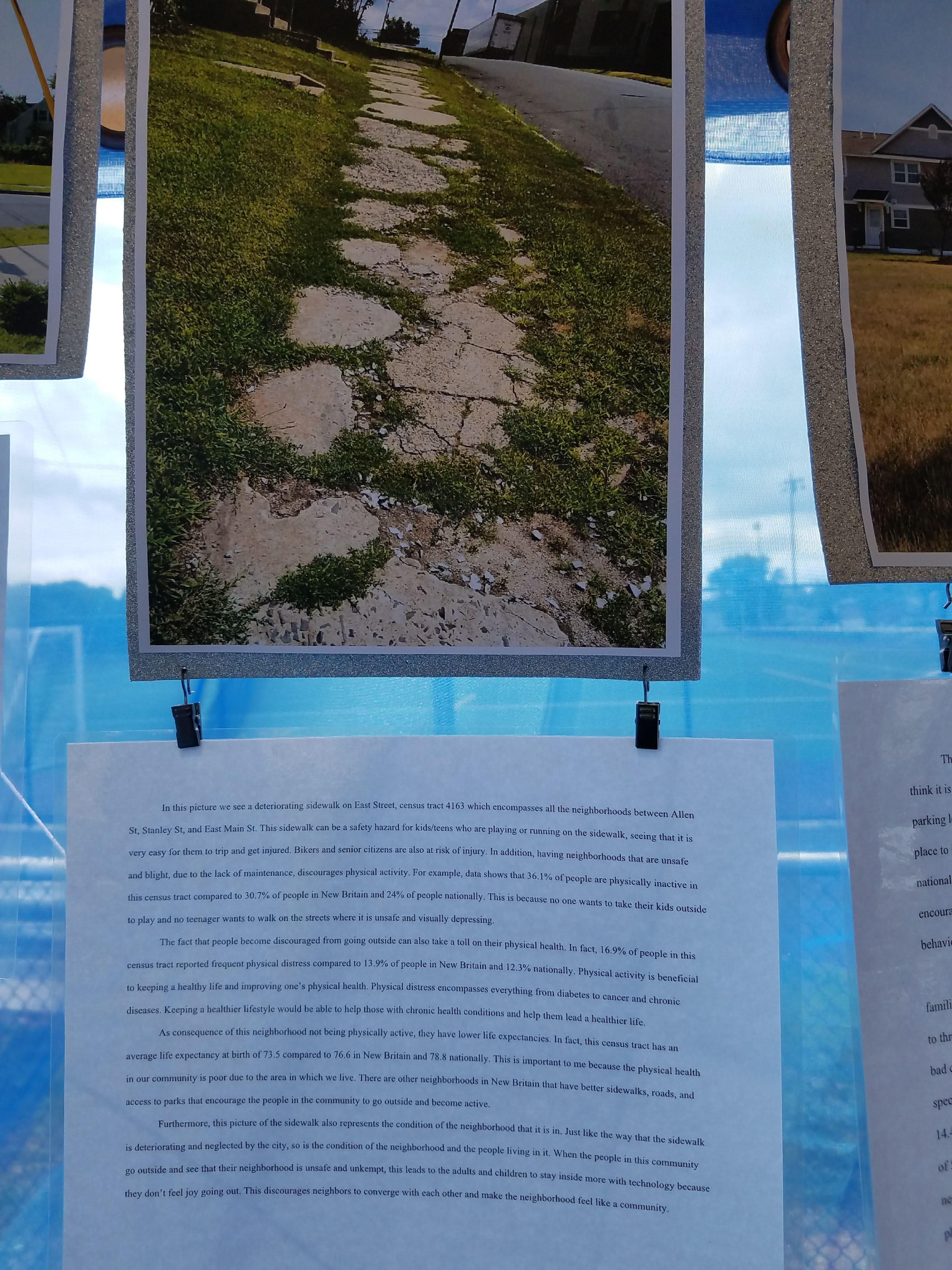
Cammarota said the teens become empowered agents of positive change.
“Photovoice gives teens leadership opportunities in the program as well as a voice in decision making, and that helps keep them engaged in after-school activities and physical activity,” Cammarota said. “They also leave feeling they can advocate on behalf of their community and talk with others, such as family members, about making healthy choices.”
Lately, Photovoice project participants are expanding into multimedia projects that implement art, conversation, and dedicated action to further highlight the problems facing New Britain.
Further, the group aims to engage teens from all parts of town.
House of Teens is currently working with YWCA New Britain, Central Connecticut State University, the New Britain Chamber and the Community Health Center to discover best-practices in reaching previously untapped neighborhoods through expanding transportation options to even forming a new location.
“Today, the program has grown into a sustainable youth and community-led movement to identify and address health, education and mental health problems confronting teens and families living in the under-resourced East Side neighborhood of New Britain,” the YWCA website states. “While HTT remains focused on health promotion, its scope is the community as a whole and the social determinants (poverty, education, employment) that influence individual behavior. By empowering youth as advocates and activists, the program aims to improve the built environment and promote policies that will make the East Side a vital place where residents can live, work, learn, and play.
“The idea to establish a central place to bring services to this side of town was born, with the hopes that it would become a hub of connection and revitalization where teens and residents can access services from multisectoral partners, engage with their neighbors, and advocate for a safe, walkable, healthy, more vibrant community.”
The group has found success, too.
In 2018, a Photovoice teen cohort alerted the city’s mayor to ongoing problems in the East Side’s Chesley Park. In 2019, the next Photovoice teen cohort met with the city’s parks director to continue the conversation about the importance of parks to community health and safety.
Their efforts, combined with those of others, has triggered a new phase of park renovation. This will include a picnic area, performance area, basketball court turf, and expanded sitting areas, benches, and a new sidewalk.
“Each project did fantastic job in the city dashboard program, and specific areas with high risk were very clearly emphasized in the Photovoice projects,” said Photovoice student Jason Zuchowicz.
The Future of Photovoice and Healthy Tomorrows for Teens
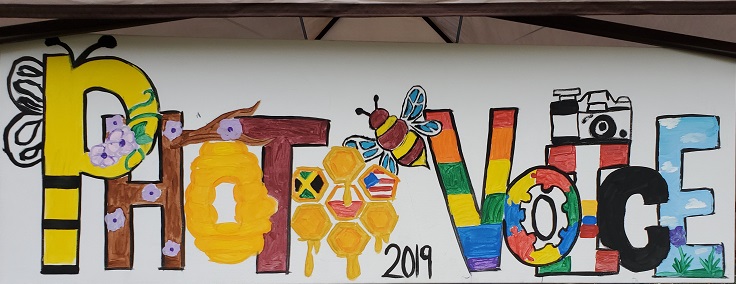 The project team will continue to pursue the interrelated goals of empowering youth through Photovoice and making the East Side Teen Center a hub of revitalization for the community.
The project team will continue to pursue the interrelated goals of empowering youth through Photovoice and making the East Side Teen Center a hub of revitalization for the community.
Thankfully, they got a third major grant for Healthy Tomorrows.
From 2019-2024, with Aetna Foundation support, the team with gathering old and new partners, including Central Connecticut State University, the City of New Britain, the Police Department, and many more.
So, for many years, teens will continue to assess their community using Photovoice and present their findings at pop-up events around town.
These events combine community-building activities, such as block parties, clean-ups, and mural painting with conversations designed to mobilize residents to advocate for ongoing improvement.
Momentum also is building to strengthen the existing Photovoice afterschool curriculum by incorporating academic content from a CCSU Community Practice class, with students serving as peer mentors to teens.
The Photovoice project also aims to add a new element to the role of a community health worker. Photovoice’s emphasis on advocacy, community assessment, communication skills, and group bonding aligns well with the roles and skills required for community health workers, a growing field with strong career potential for teens.
The New Britain team also shared information about Photovoice with colleagues from the University of Texas, Austin, School of Public Health, who are also developing a community health worker curriculum for high school students.
“The long term goal is to make [this] a hub for community revitalization, a place where teens and their families can congregate to define needs and use Photovoice and other interdisciplinary collaborative strategies to help find solutions,” Hannay said. “To accomplish this goal, we will recruit new members to expand our reach into the community even further and to provide more comprehensive services, particularly by increasing representation from even more partners in business, education, government.”
Explore More:
Increasing Civic EngagementBy The Numbers
50
percent
of big U.S cities have a local board of health
This success story was produced by Salud America! with support from the Robert Wood Johnson Foundation.
The stories are intended for educational and informative purposes. References to specific policymakers, individuals, schools, policies, or companies have been included solely to advance these purposes and do not constitute an endorsement, sponsorship, or recommendation. Stories are based on and told by real community members and are the opinions and views of the individuals whose stories are told. Organization and activities described were not supported by Salud America! or the Robert Wood Johnson Foundation and do not necessarily represent the views of Salud America! or the Robert Wood Johnson Foundation.

